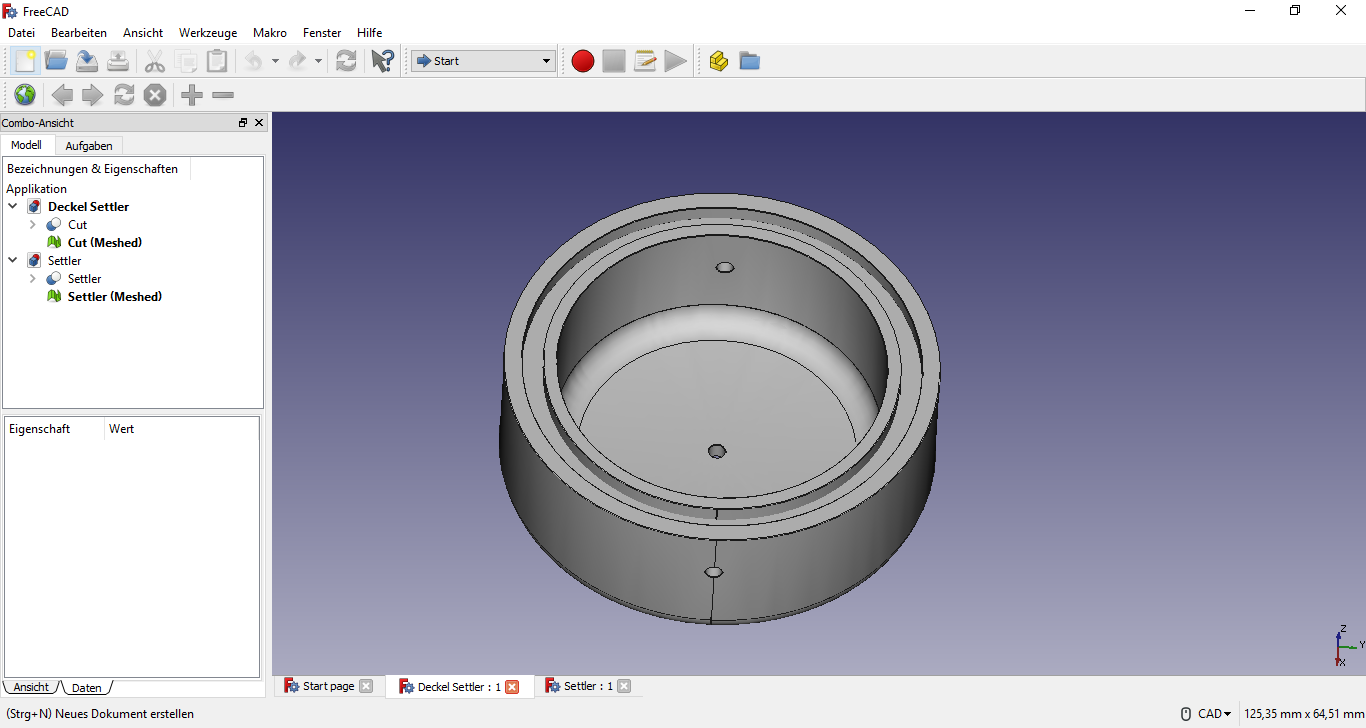| Line 146: | Line 146: | ||
</figure></br> | </figure></br> | ||
<article> | <article> | ||
| − | The filter system has been replaced by a favorable settler. This system is not only more cost-efficient in comparison to an expensive filter membrane system, it also enables the easy performable return of cells to the reactor unit without the risk of forming a filter cake. Cells leaving the reactor unit are intercepted by the settler based on the phenomenon of sedimentation. A glass hopper serves as a settler. If the cells sediment to the ground of the hopper, pressure is applied using a common syringe to pump sterile air into the settler system. The pressure applied by the syringe forces the accumulated biomass back into the reactor unit allowing to maximize the yield. | + | The filter system has been replaced by a favorable settler. This system is not only more cost-efficient in comparison to an expensive filter membrane system, it also enables the easy performable return of cells to the reactor unit without the risk of forming a filter cake. Cells leaving the reactor unit are intercepted by the settler based on the phenomenon of sedimentation. A glass hopper serves as a settler. If the cells sediment to the ground of the hopper, pressure is applied using a common syringe to pump sterile air into the settler system. The pressure applied by the syringe forces the accumulated biomass back into the reactor unit allowing to maximize the yield. The temperature of the reactor unit was adjusted to 37 °C using a double jacket plugged to a thermostat. Previously, the process occurred at room temperature. However, since <i>E. coli</i> exhibits the greatest activity at 37 °C, it is favorable to adjust the temperature to its needs. Control over the temperature is essential for process optimization. A conical form of the reactor unit improves the oxygenation of the culture. The whole system can be autoclaved.</br> |
In order to promote the thought of open source and public accessibility we provide the scientific community with a construction plan for 3D printing both reactor units using the freeware FreeCAD. The production takes approximately eight hours using a 3D printer. Since the favored printing material polylactic acid (PLA) costs around 0.5 USD per cm<sup>3</sup>, reconstructing the reactor unit is cheap. Several components of the system can be produced using PLA although using glass is possible as well. Cell retainment in the reactor unit saves time and reduces costs as working procedures to separate the cells from the medium become no longer necessary. Silicon tubes can be acquired for 0.88 USD per meter, peristaltic pumps for less than 177 USD, yielding a total cost of less than 360 USD for the complete reactor. | In order to promote the thought of open source and public accessibility we provide the scientific community with a construction plan for 3D printing both reactor units using the freeware FreeCAD. The production takes approximately eight hours using a 3D printer. Since the favored printing material polylactic acid (PLA) costs around 0.5 USD per cm<sup>3</sup>, reconstructing the reactor unit is cheap. Several components of the system can be produced using PLA although using glass is possible as well. Cell retainment in the reactor unit saves time and reduces costs as working procedures to separate the cells from the medium become no longer necessary. Silicon tubes can be acquired for 0.88 USD per meter, peristaltic pumps for less than 177 USD, yielding a total cost of less than 360 USD for the complete reactor. | ||
</article> | </article> | ||
| Line 170: | Line 170: | ||
</figcaption> | </figcaption> | ||
</figure> | </figure> | ||
| + | |||
| + | <article> | ||
| + | Click <a href="https://static.igem.org/mediawiki/2018/a/a6/T--Bielefeld-CeBiTec--jr--Bioreactor_Bielefeld-CeBiTec2018.zip">here</a> to download the files. | ||
| + | </article> | ||
| + | |||
<hr style="width:60%"></hr> | <hr style="width:60%"></hr> | ||
Revision as of 02:30, 18 October 2018

Hardware
Printing Electronics

Silver has the highest conductivity and does not oxidize making it a popular choice for flexible electronics. Gold on the other hand is very expensive but has the advantage of not reacting with biological systems.



Design of a Cross-flow Bioreactor





Raut, N. C., & Al-Shamery, K. (2018). Inkjet printing metals on flexible materials for plastic and paper electronics. Journal of Materials Chemistry C, 6(7), 1618-1641.


